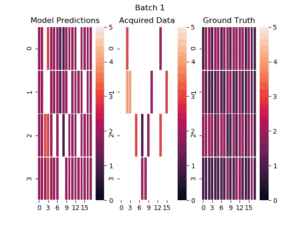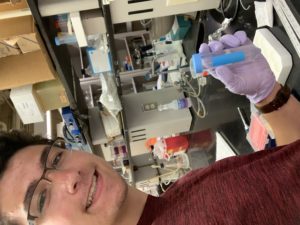Hi everybody! This is going to be my last blog as I have now completed my computational biology internship at CMU and am back in Telluride.
Over the past 6 weeks I have learned as much as I might have in a year-long course in a traditional setting. My experience ran the gauntlet from learning how to use a basic micro-pipet to creating a neural network for image processing. Throughout all of this, even when I was mentally exhausted trying to find a bug that eluded me or frustrated that my bacteria hadn’t grown, there was never a single moment that I regretted this. It has been a blast from start to finish and all of the people who have made this possible have my greatest thanks with special mention to Sarah Holbrooke and Joshua Kangas. Thanks to them (and many others) my junior summer has been one of the best in memory.
Now as for what I actually did this past week, I don’t have quite as much to tell you as last time; my last few days were spent preparing to leave and helping move in a number of new machines so future CMU students can learn about computational biology from a practical approach. What I did do however was cap off all the projects I had been working on for the entire summer.
For one, I finally finished my part working with Flectobacillus Roseus: the bacteria I discussed in previous blogs which has never been fully sequenced. It has been sent off and we expect to get its entire DNA fairly soon. It turns out that Josh actually has plans to write 3 papers on it one of which will hopefully be published in the next month or so. He has told me that I will be listed as first author on that paper (unless Carley, one of the TA graduate students, gets more involved in writing it in which case I will be second) and that is something for which I will be eternally grateful. This will be a great help for my college applications and is a wonderful opportunity in general.
The second project that I completed this past week was my image processing one that I discussed at length in my week 5 blog. It has been going for nearly the entire second half of my internship and has involved everything from using a liquid handler to filetype conversion to machine learning. Specifically it looked at the effect of a variety of drugs on 3T3 cells. This last week I finished adapting a machine learning program that looks at the images of the cells (that I was trying to produce and manipulate in previous weeks) and tries to guess what drug was used based only on that image. It doesn’t perform particularly well and would require much more development to be of any practical use, but it is better than just guessing and has some really intelligent design elements. It utilizes active learning to guess what the all the different drugs are and then decide which future experiment to do in the future so that it can learn the most in the least amount of time. It’s a very complex and cutting edge research field, but what it means for me is that if I hooked up my program to a new microscope with a new plate under it, the program would start to guess where it needed to look to find out the most about that plate. Even if I never told it how I arranged the drugs it would figure it out on its own by guessing intelligently. Or at least that’s the idea. It was a very cool process that I hope I can explain better during my pinhead presentation in October. Below I’ll put and image of a simulated microscope doing this and trying to guess what the drugs are.
Once again I would like to reiterate how grateful I am to everyone who made this internship possible, and encourage current juniors to give the program a shot. You won’t regret it.



Finally, a photo of you Josh!!!! I have been waiting 6 weeks!!!
Internship sounded AWESOME!!!! I loved reading your blog each week!
Excellent job! Thanks for sharing w/us!!!
Josh: Great final report! I’m completely blown away by the sophistication of the work you were involved in. What a great experience! Kudos to Pinhead Institute and all those who made your productive summer possible. I look forward very much to your research paper when published! Grandpa Jon
Many thanks for sharing your joys